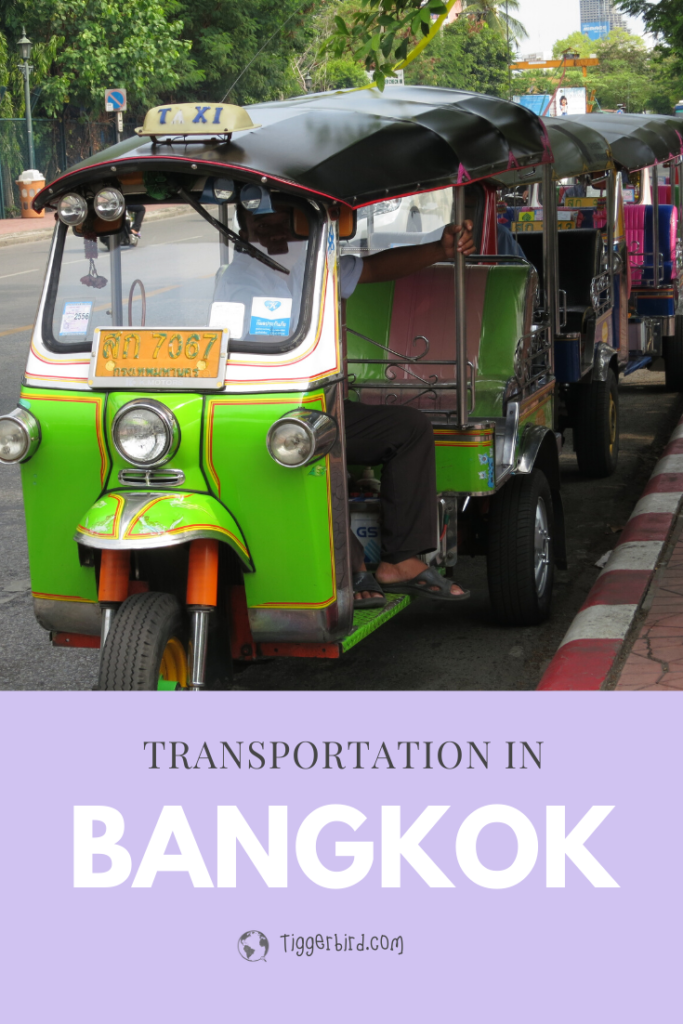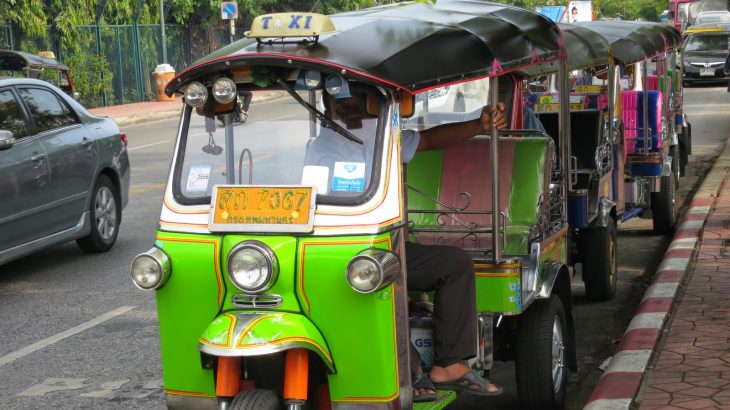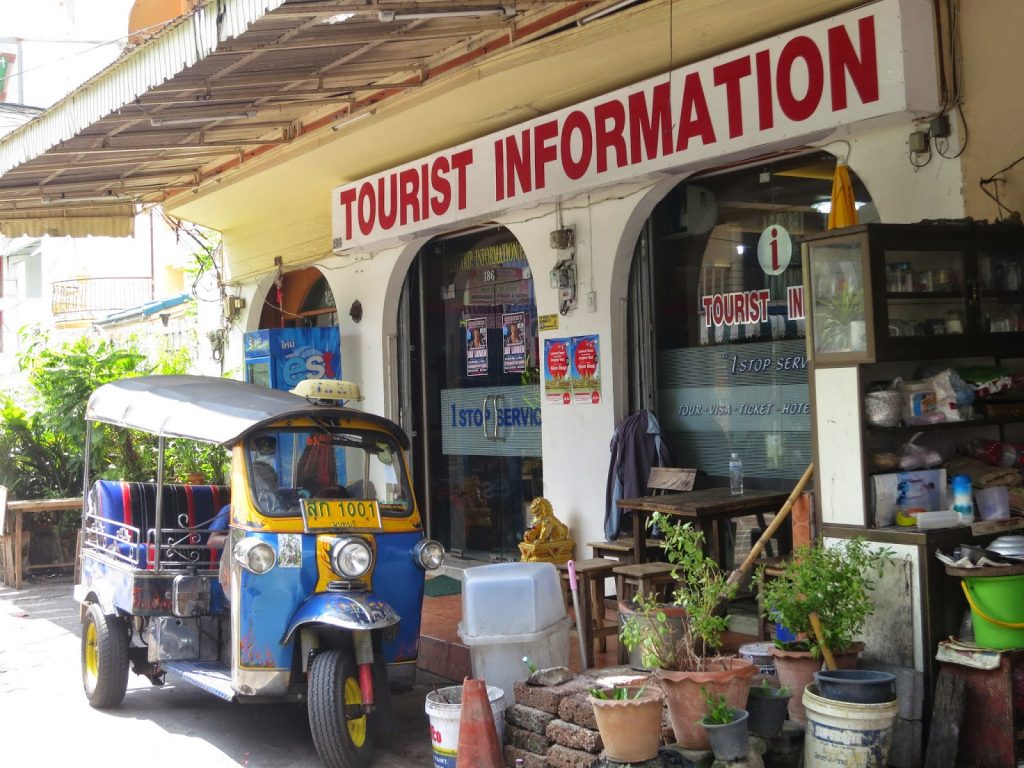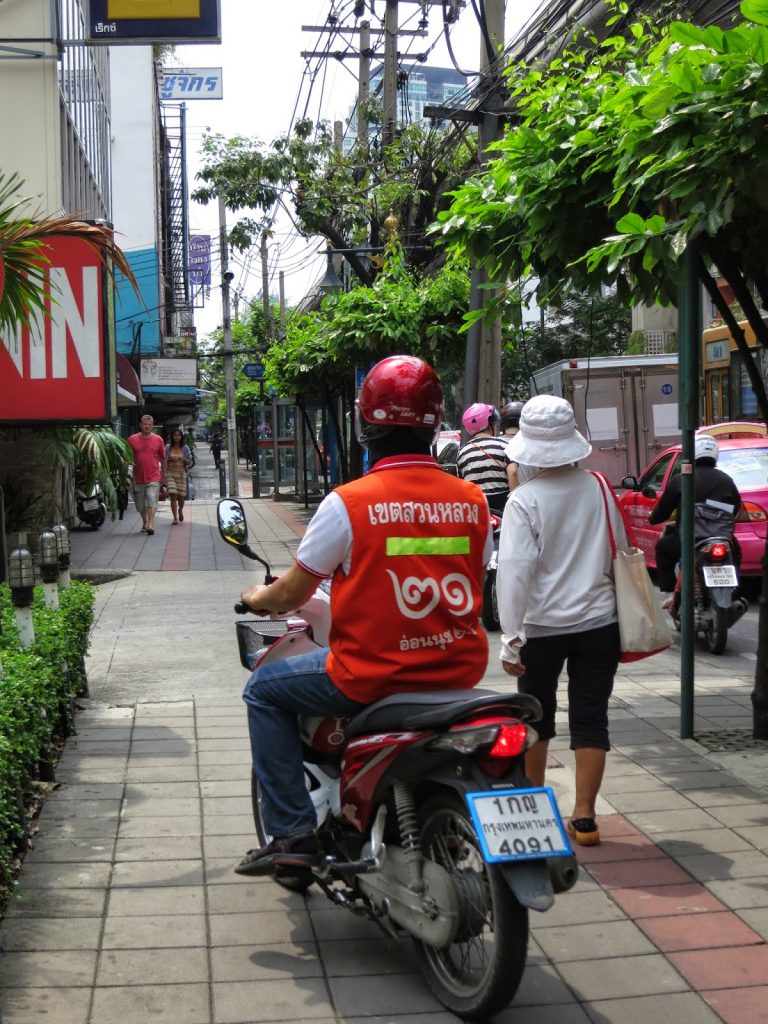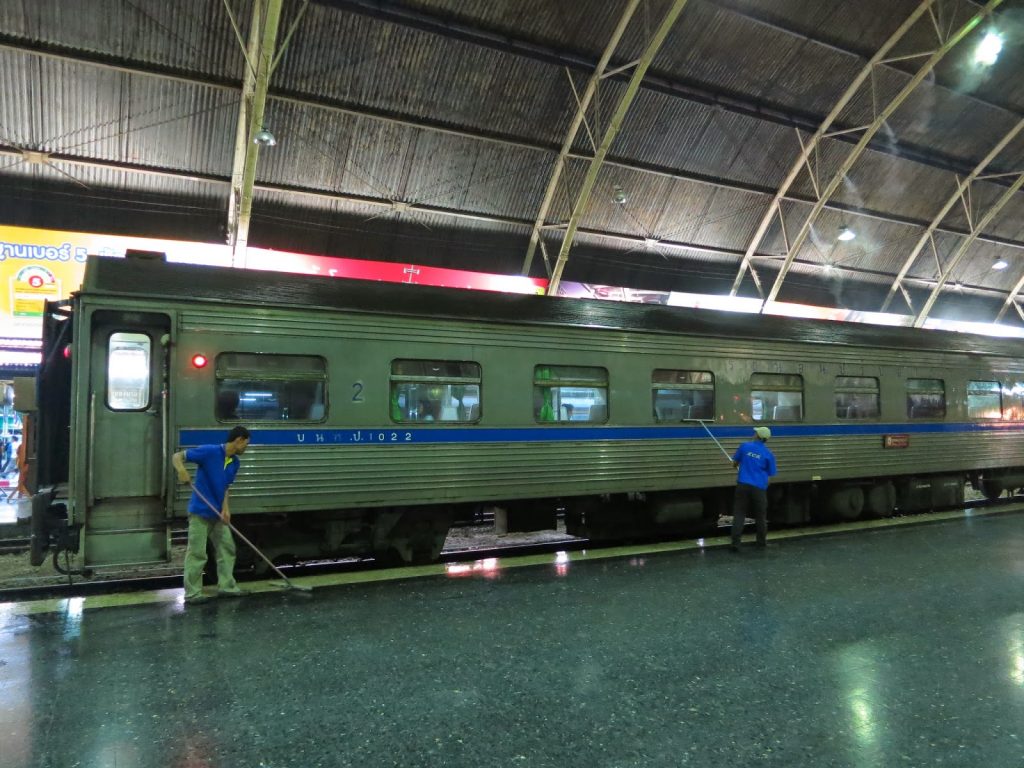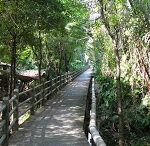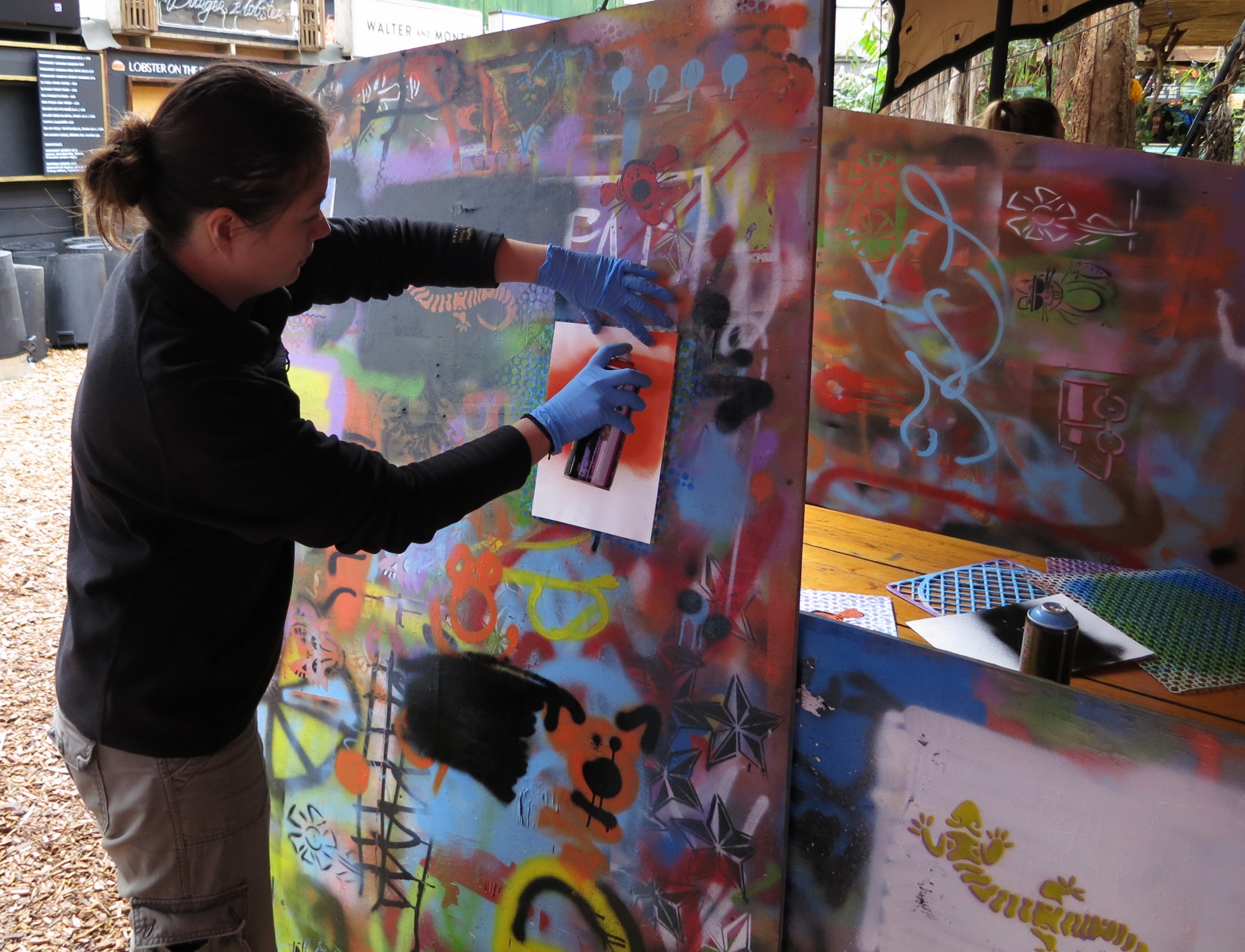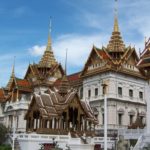Most first timers to Bangkok will automatically jump in a taxi on arrival at the airport, or even just to get from A to B once in the city. However, just because taxi travel in Thailand is one of the cheapest in the world, it does not mean it should always be the default. There are some great experiences to be had by taking other forms of transportation in Bangkok and if you have a little time on your hands it’s often an adventure.
Researching all the options can be a minefield, so this post should hopefully give you a summary of the options available and point you in the direction of some useful resources to help plan for your Bangkok transport needs.
Arriving at the airport in Bangkok
Make sure to check which airport you are heading to/from, as there are two.
If you are arriving into Suvarnabhumi International airport there are a few options for getting into the city:
Airport link (runs between 6am and midnight)
This is my go to option unless the timings don’t work. Take the Airport Link to Phaya Thai, then a taxi on to you final destination – hail one from the pavement at the bottom of the steps/escalator once ascended from the station; or switch to the BTS Sky train for other destinations. This cuts out the airport tax, tolls and avoids delays.
Taxi
There is a very high risk of getting caught in gridlock traffic at any time of day or night, wasting time, getting frustrated and leaving you feeling somewhat drained. Taking a taxi from the airport, also involves an extra airport tax fee of 50 Baht, and toll road fees as well.
If you still prefer to take a taxi, the public taxi stand is at the end of arrivals, so ignore the booths in the main hall. There is also an unofficial taxi queue (but for proper metered taxis) on the main road right outside the terminal – to get there, head right when outside the terminal building and walk under the bridge towards the footbridge that passes over the main road. Taxis travelling south will stop by the yellow bus stop at the base of the footbridge, although the official stand can be found on the other side of the bridge.
Other than time, it will cost you approx 300-400 Baht from the airport to Banglamphu (area includes Khao San Road), which is where most budget travellers choose to stay.
Buses
I wouldn’t recommend taking a bus from the airport in Bangkok as they can be slow and crowded, although they are the cheapest option if you’re on a tight budget. For example there is an express bus (S1) which has a number of stops including Khao San Road. Departures are from Gate 7 on 1st floor.
Other options
There are private airport transfers available, as well as rental cars but prepare for traffic.
Getting around Bangkok
The majority of budget travellers/backpackers will stay in Banglamphu, and this interestingly has the least number of transportation options available close by. However it’s easy enough to get a ferry or taxi, or the occasional klong or tuk tuk.
Taxis
Brightly coloured yellow, green, pink, orange and sometimes even red or blue, taxis in Bangkok are everywhere. They are metered and you should refuse to travel with one that insists the meter isn’t working. Also check that they have a name card with code number (usually displayed in top left of dashboard). The meter should start at 35 Baht and increases slowly as time and distance is clocked.
The drivers don’t always speak English so having your destination in Google maps (take offline unless you have a local SIM) can help. There are often attempts at ripping tourists off, so an awareness of your expected fare and an [offline] map will ensure you are taken the shortest route and not on a wild goose chase.
Tuk Tuk
These three wheeled covered motorbikes are becoming slightly less popular. They can take from two to four (or more!) people but are best for short distances.
Drivers are renowned for increasing their prices for tourists or potentially trying to take you somewhere you don’t want to go. For example be careful to avoid a tour round all the commission based gem factories.
Always agree the price upfront, and have an idea of a reasonable fare to agree to. We often travel out to a destination via a different mode of transport, and then negotiate a tuk tuk back, using the cost of other transport as the basis for negotiation. It’s OK to agree a slightly inflated price for the experience.
Here’s a few more tips when travelling by tuk tuk.
Motorbike Taxis
These will take you short distances, and are great for getting through bad traffic. If you are carrying a lot of luggage or shopping, I do not recommend trying to balance this on the back of a motorbike.
Motorbikes tend to hang out with other bikers, in brightly colored vests. The prices are sometimes advertised in Thai/English where they wait.
BTS (Bangkok Mass Transit System)
Better known as the Sky Train, this is the best choice for getting to many shopping centres (eg Siam Square), central Bangkok and to the main river boat terminal.
You can find out more detailed information about the areas covered and fares here.
MRT (Metropolitan Rapid Transit)
Mostly underground this option is a good link to the larger suburban areas. However it also links to the BTS, airport and several popular tourist destinations (eg Chinatown).
You can find out more detailed information about the areas covered and fares here.
River boats
River taxis and express boats can be used to explore many historic sites and attractions along the river. These regularly sail up and down the Chao Phraya River stopping every 15 mins or so.
Get your ticket on the boat for just 16 Baht per journey. Try to avoid any ticket sellers on the pier (although they may encourage people do this at certain stops now). For full details of the route and timetable see here.
Note that the tourist boat ticket is more expensive and the local ferry stops at more places. The only benefit of paying more and going on the tourist boat, is you are more likely to get a seat. Plus there’s some limited commentary on the landmarks along the river. None of that is going to beat the fun experience of having to jump on and off before the boat departs. If you are a little unstable on your feet or don’t like being packed in like a sardine, take the tourist boat.
Klong boats
Experience local travel by taking a Klong boat. Much like the river boats these require a fairly active attitude, as you have to climb on and off the side of the boat. There is a risk of getting wet if the plastic screening doesn’t do it’s job. But it’s quite a fun way to travel. Route details can be found here.
Buses
I would only recommend using the Bangkok buses once you have been there a while. They can be very cheap and cover areas not covered by Sky Train or Metro stations. However unless you know what number bus you need and where it stops, it can be difficult to use.
The Bangkok Transit website has a useful route planner tool, which also incorporates the BTS and MRT as well as the buses.
Long-distance buses
Buses do tend to be a good option for travel on to other areas in Thailand. Although the bus terminals can be difficult to get to. If you have luggage it’s worth taking a taxi to them.
There are 3 long-distance bus stations:
- Northern Bus Terminal (Mo Chit) – covering North/Central/Eastern Thailand.
- Eastern Bus Terminal (Ekkamai) – covering Eastern Thailand.
- Southern Bus Terminal (Sai Tai) – covering Southern Thailand.
Walking
With all the above options, you may be surprised to find that you’ll probably do more walking than you ever expected in Bangkok as transportation is not very well linked up. You can, for example, find yourself walking 15 minutes from the BTS to the MRT.
Train
If the city starts to become too much, consider taking advantage of Bangkok’s train stations Hua Lamphong and Thonburi, for day trips away.
For in depth information check out the Seat61 site here which has lots of other useful information.
Do check the most up to date information before you travel. Otherwise, good luck.
If you’re looking for more information when travelling further in Thailand, check out My picks from Thailand post for more.
*Note that the original post first appeared on Tiggerbird’s Travels back in January 2015. The information has been updated for current details.
Pin it for later:
